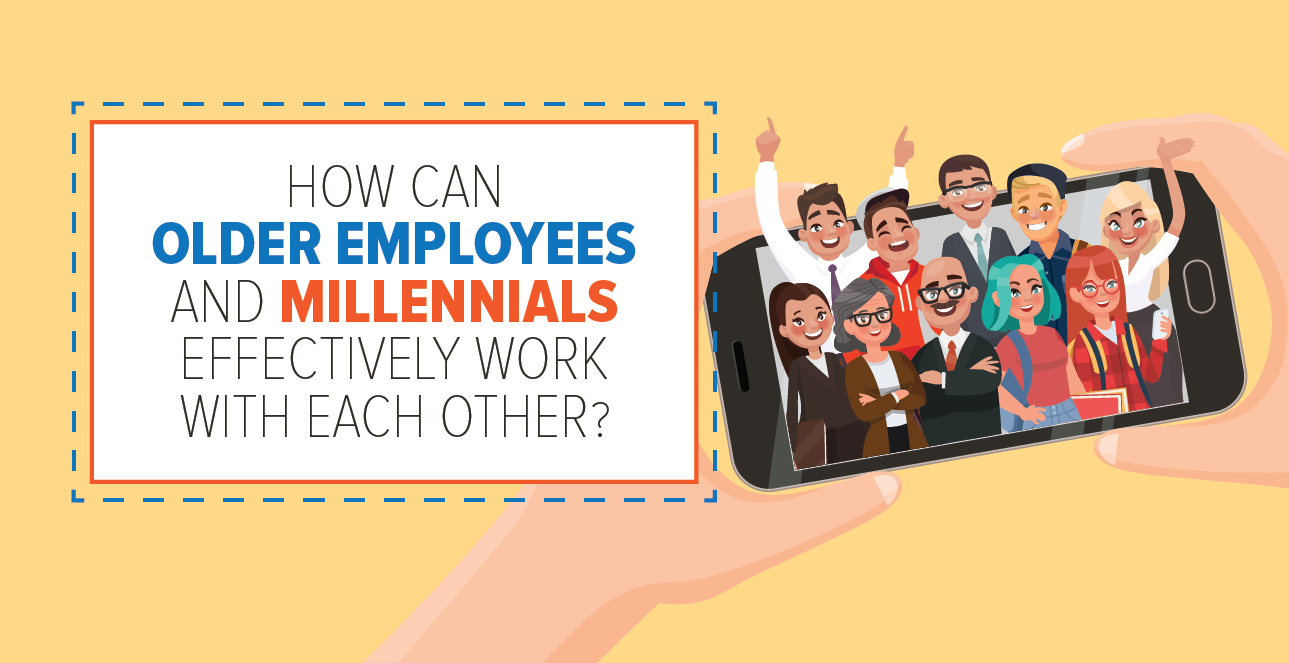The modern workplace is at its peak of age diversity. Most companies currently have three generations working together in one office; some even have four. Countless studies have shown that each group has distinct characteristics, differing priorities, and varying work ethics. These stereotypes sometimes lead to divisive behavior among employees, hindering efficiency and lowering productivity.
People in the workplace shouldn’t be afraid of this. Recruitment consultants have been noticing the trends and figured that it’s high time to accept and adapt to the changes in the workforce. This set-up creates an exciting opportunity to evaluate your team members and utilize each generation’s strengths.
Co-workers should be aware and respectful of the ideas and methods of each group and make it a habit to learn from them instead of criticizing them. But, respect begins with awareness and understanding of the different generations and their work ethics.
Who are the Different Generations in the Workplace?
Baby Boomers
Born between 1946-1964, Baby Boomers are a diligent and steadfast group. Their nickname came from the increase of birth rates at the time following World War II. Get Smarter paints a picture of what Baby Boomers are like in the office:
- Tenacious and disciplined
- Highly committed to their work
- More inclined to do overtime work
- Good team players
- Excellent mentors to co-workers
- Prefer structure and traditional practices
- Resistant to change and some technology
Generation X
Gen X make up a considerable part of the older workforce, even though the media don’t put that much focus on them. Their birth years are from 1965-1980. A lot of them are now raising the new generation after millennials. In the workplace, they are:
- Good and effective managers
- Critical thinkers and problem-solvers
- Highest revenue generators among the age groups so far
- Favorable with work-life balance and flexibility
- Outspoken in the work setting
- Efficient and fast workers
Millennials
Set to comprise half of the workforce by 2020, the millennials bring about change with their radical ways of thinking. Also known as Generation Y, they are the age group born during 1981-1996. These are their defining traits in the workplace according to Business Insider:
- Enthusiastic and positive about their careers
- Highly knowledgeable in technology and social media
- Independent and do not need to be micromanaged
- Particular about career growth
- Want to be a part of a company whose values they align with
- Resourceful and innovative
Those born in the year 1997 are referred to as Gen Z. The first batch of this generation have already graduated, and some of them are starting their careers already.
Here are some of the learning points old and young employees can learn from each other and how both can flourish in the workplace.
Age is Just a Number
Intergenerational relationships are great learning opportunities for all parties involved. It broadens people’s perspective and expands their way of thinking. There are many ways to encourage the older generations and millennials to work more effectively together. But ultimately, this starts with getting to know each other more.
Having different generations interacting in one space is the best way to remove the divisions and conventional thinking that most people have. It will allow every person to share their worldviews and opinions respectfully, as well as learn to accept other points of view that may not necessarily agree with them.
Furthermore, they will be able to see their common principles and goals and realize that they’re not so different after all. In fact, the IBM Institute for Business Value released a study that compared the career goals of the different generations and saw common trends, such as financial security and seniority.
Conclusion
So, can the generations get along? Of course. Despite all their differences, everyone values harmony and cooperation among team members.
Be proud of being a part of a diverse work environment. As the years pass and new generations are born, new techniques will be in practice to make work simpler and more efficient for everyone. The human aspect of the job, however, will always remain. Understand and celebrate each other’s differences and continue to find the best way you can all work in a team.















